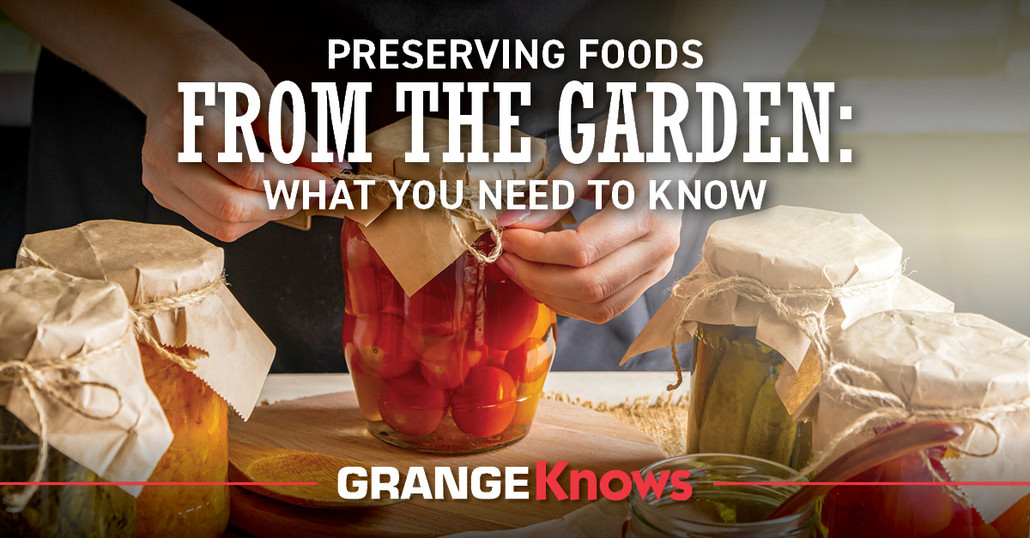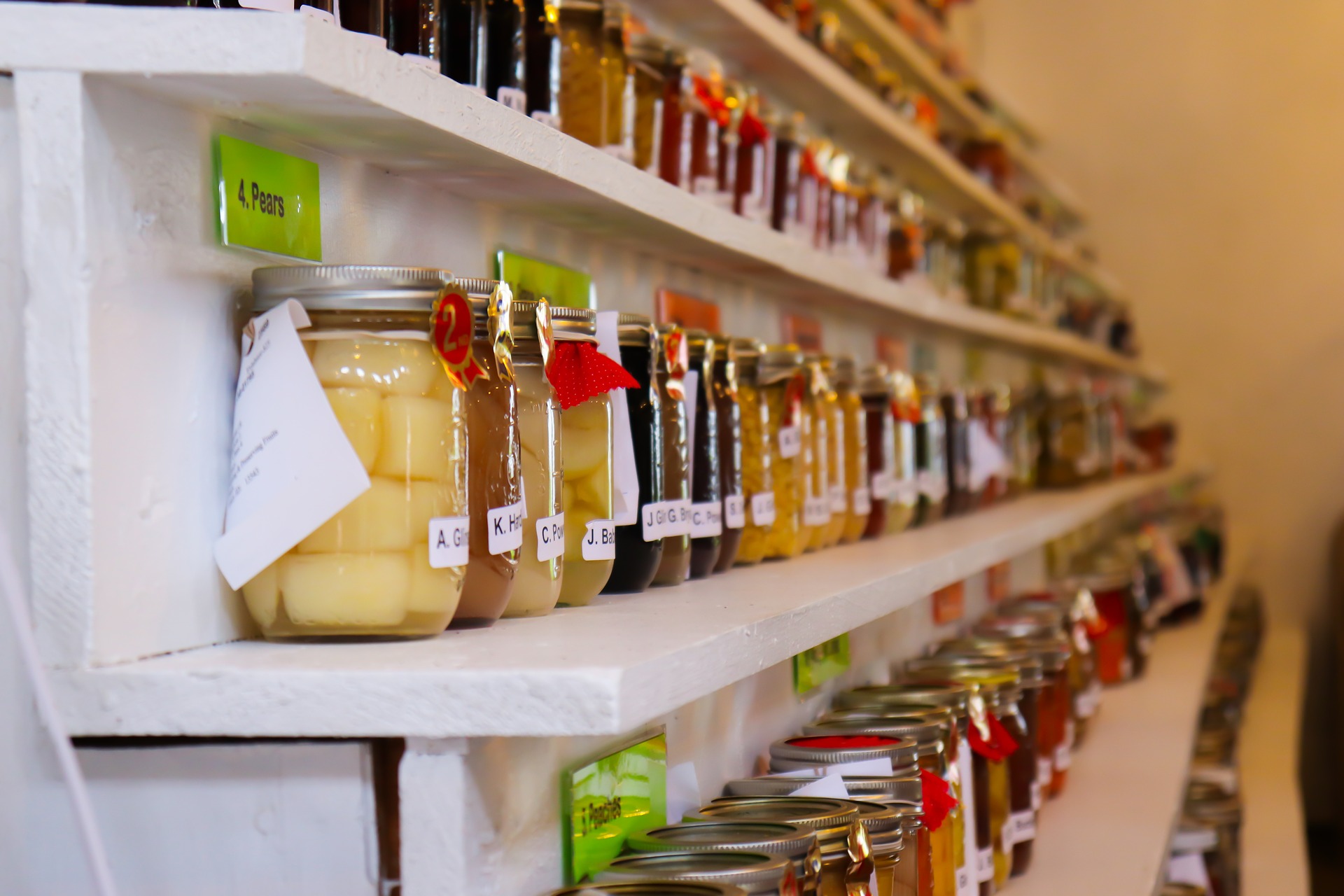
Preserving Foods from the Garden: What You Need to Know
Posted by Grange Co-op on 28th Sep 2022
The garden is in, ready to harvest, and you have enough to feed your family for the next year. Maybe you planned on growing enough food to last all winter, or you just got lucky and have a bumper crop. In either case, it’s time to start thinking about your options in food preservation.
The Best Methods for Storing Produce

Food preservation is the treatment of food that prevents or slows down spoilage. There are numerous methods used, ranging from salt or sugar preservation to dehydration. Dehydrating meat removes the moisture that causes it to spoil. The same process can be used to preserve fruits and vegetables that you can eat as snacks or as ingredients in recipes.
If you have a significant amount of produce to preserve, you will probably end up using more than one method. One method might work best for preserving produce exactly as it came out of the garden. You might consider a different method for foods in recipes. Some of the most popular ways to preserve produce include:
Canning
For many people, canning food is often the method of choice for storing produce from the garden. It offers advantages over other types of preserving, such as producing foods with a long shelf life. Canned foods have a long shelf life, and they don’t take up space in your freezer. But the same canning process isn’t the best for all types of food.
There are two methods of canning, including using an immersed boiling water bath that exposes foods to lower temperatures. Immersion canning is for vegetables that are high in acid. You will need a water bath canner to prepare foods in this way. The natural acidity of these foods aids in preserving them. They include tomatoes, sauerkraut, fruit, and pickled veggies.
The second method of canning uses a special pressure canner to preserve food. Pressure canning is for low-acid foods that require a higher temperature to kill harmful bacteria.
Some foods that require pressure canning include:
- Mushrooms
- Carrots
- Green beans
- Corn
- Potatoes
- Onions
- Artichokes
- Asparagus
- Peas
- Winter squash
- Some fruits, such as cherries, grapes, and peaches
The primary reason for choosing one method of canning food over the other is the pH of the food. Basically, foods with a pH of 4.6 or lower are high enough in acid to preserve in a water bath. Those with a pH higher than 4.6 need to be canned with pressure. If you still aren’t sure or you are preparing recipes, use a guide that helps ensure you use the best method for the food.
Freezing
This is one of the simplest methods of food preservation there is. It generally requires minimal equipment, and it’s fast and easy. There are, however, some downsides to freezing vegetables, particularly if you have a lot to store.
You might require a deep freeze to keep your produce. Otherwise, you can expect to have your freezer stuffed full with no room for anything else. Many people don’t feel that the expense of buying and running an extra freezer is worth it.
There is also the risk of losing everything if you have a power shortage or the freezer breaks down. To maintain the quality of the food, it must be maintained at a constant low temperature.
The quality of the container matters too. If it lets air in, it can result in freezer burn. People often blanch vegetables before freezing them to retain their quality and taste. These are some considerations that you must plan for before freezing your vegetables.
One of the biggest differences between canned and frozen veggies is how long they last. Canned vegetables have a shelf life of years, whereas frozen vegetables are only good for a matter of months.
You can freeze almost any vegetable with a few exceptions. Vegetables like celery, radishes, green peppers, cucumbers, lettuce, and tomatoes become watery and lose their flavor when frozen. Before deciding to freeze any vegetable, make sure it’s recommended and that you have ample space to keep them for the long term.
Pickling
Pickling involves putting vegetables in liquids with salt, vinegar, or alcohol, which prevents spoilage. Most often, this type of produce storage is limited to pickles, beets, sauerkraut, and different types of relishes. The only real difference between canning and pickling is the liquid used.
Drying
Many fruits can be dried, along with some veggies such as tomatoes, potatoes, carrots, corn, and green beans. You can use a dehydrator or dry them in the sun or an oven. These foods might last anywhere from a few months to several years, depending on your method of storage. If you keep them in areas with high temperatures, they won’t last as long.
Additional Benefits of Food Preservation
When you store produce from your garden, you have access to healthy snacks and recipe ingredients year-round. It reduces food waste, and reusing canning jars reduces the number of containers added to the landfill. It also helps reduce your costs at the grocery store — something that’s even more important while food prices continue to grow.
There’s also the sense of accomplishment that you feel from seeing your harvest beautifully displayed. Nothing compares to the knowledge that you filled your pantry or freezer with food you nurtured from its beginning as a seed or seedling.
Get Everything You Need for Food Preservation at Grange Co-op
Food preservation can be simple, practical, and fun if you start with the right equipment. If you have questions or need help choosing the right products, contact us. A Grange Co-op expert is here to answer your questions.
